In the welding industry, there is nothing more frustrating than an auto-darkening welding helmet that doesn’t work. These helmets are designed to protect your eyes from the intense light and heat of the welding process, but when they don’t function properly, it can be very dangerous.
In this article, we will answer some common questions about auto-darkening welding helmets and provide some tips on how to fix them if they are not working correctly.
Table of Contents
Auto-Darkening Welding Helmet Not Working? Troubleshooting Tips
If your welding helmet isn’t working well, there are a few things you can do to troubleshoot the issue:
- First, check to make sure that the batteries are fresh and that the helmet is turned on. If the batteries are low or dead, they will need to be replaced;
- If the helmet is turned off, turn it on and try again;
- If the helmet is not working, check to see if the lens is dirty or scratched. If it is, clean or replaces the lens;
- If the problem persists, there may be an issue with the sensors or circuit board inside the helmet;
- In this case, you will need to take your helmet to a welding professional for service;
With a little troubleshooting, you should be able to get your auto-darkening welding helmet working properly again. Be sure to follow the manufacturer’s instructions for care and maintenance to prevent future problems.
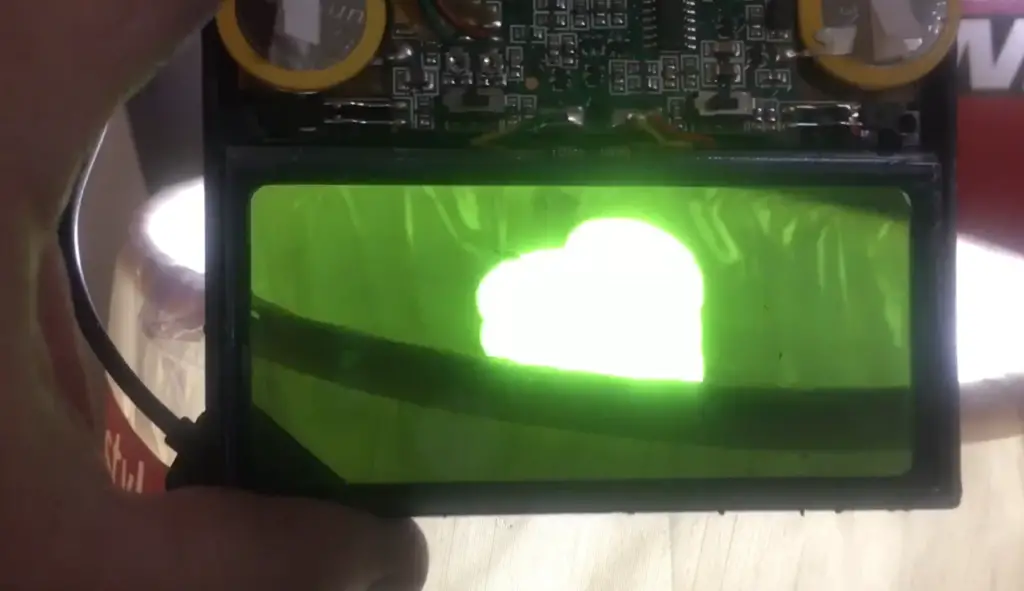
Problem 1: Low Visibility
If you find that your auto-darkening welding helmet isn’t working as well as it used to, one possibility is that the sensitivity setting has been turned down too low. This can make it difficult to see what you’re welding, especially in bright environments.
To fix this problem, simply turn up the sensitivity until you can see the weld area clearly.
Clean Your Welding Helmet’s Lenses
If your helmet’s lenses are dirty, it can affect the auto-darkening mechanism and make it difficult to see.
To clean the lenses, first, remove them from the helmet. Then, use a soft cloth or lens cleaning solution to gently wipe away any dirt or debris.
Once the lenses are clean, reattach them to the helmet and try welding again. [1]
Adjust the Sensitivity
If your welding helmet’s auto-darkening mechanism isn’t working properly, one possibility is that the sensitivity is set too high.
When the sensitivity is set too high, the helmet may darken prematurely, making it difficult to see what you’re welding.
To fix this problem, simply turn down the sensitivity until the helmet only darkens when you start welding.
Problem 2: Restricted Visibility
If you’re having difficulty seeing while welding, it’s likely that your auto-darkening helmet isn’t functioning properly. This can be a problem with the lens itself or with the batteries.
If you are using an older model helmet, the battery might not be working correctly. Try replacing the batteries. If you are using a newer model helmet, the lens might not be working properly. Try cleaning the lens with a soft cloth.
Problem 3: Too Much Visibility
The problem could be that the welding helmet is too light. There are a few things you can do to fix this:
- Turn down the sensitivity knob. This will make it so the helmet darkens more slowly, giving you less time to be blinded by the light;
- Wear a welding hood over your welding helmet. This will help to keep the light from getting in [1];
Problem 4: Helmet Feels Unreliable
Welders are constantly in danger of getting welding slag, sparks, and other hot debris in their eyes. That’s why a welding helmet is such an important piece of safety equipment. But what do you do when your welding helmet isn’t working properly?
If you’re having trouble with your welding helmet, there are a few things you can do to try to fix the problem:
- First, check to see if the batteries are working. If they are, try replacing them. Sometimes, old batteries can cause problems with welding helmets;
- Another thing you can try is cleaning the lens of the helmet. You can use a cloth or a brush to clean it off;
- Finally, make sure that the helmet is fitting correctly on your head. If it’s not, adjust it until it does;
If that doesn’t work, try resetting the helmet. To do this, turn off the power switch and remove the battery. Wait a few seconds, then put the battery back in and turn on the power switch. This should reset the helmet and hopefully fix the problem.
If your welding helmet still isn’t working properly, it’s time to take it to a professional. They can diagnose the problem and help you get your welding helmet back in working order.
Tighten it Up
One common issue that can cause an auto-darkening welding helmet to stop working is that it needs to be tightened. Over time, the repeated use of the helmet will loosen the internal parts, which will make it work less effectively.
In order to fix this issue, you will need to open up your welding helmet and tighten all of the internal parts. This is a fairly simple process that anyone can do, but it is always a good idea to consult your helmet’s manual before you begin.
Once you’ve tightened up all of the internal parts, close up your welding helmet and give it a try. If it still isn’t working properly, there may be another issue that you need to address.
Problem 5: Adjustment Time Is Too Slow
If your welding helmet is taking too long to adjust to the light, there are a few things you can try:
- First, check the sensitivity setting. If it is set too low, the helmet will take longer to adjust. You can try increasing the sensitivity to see if that helps;
- Another thing you can try is to clean the lens of the helmet. Dirt and debris can build up on the lens and block the light sensor. Cleaning the lens will remove any obstructions and allow the sensor to work more effectively;
If you’re still having trouble, it’s time to take your welding helmet to a professional.
Problem 6: You Can’t See Enough of Your Weld
If you can’t see enough of your welding area, it’s likely because your helmet’s sensitivity is set too low. To fix this problem, you’ll need to increase the sensitivity of your helmet.
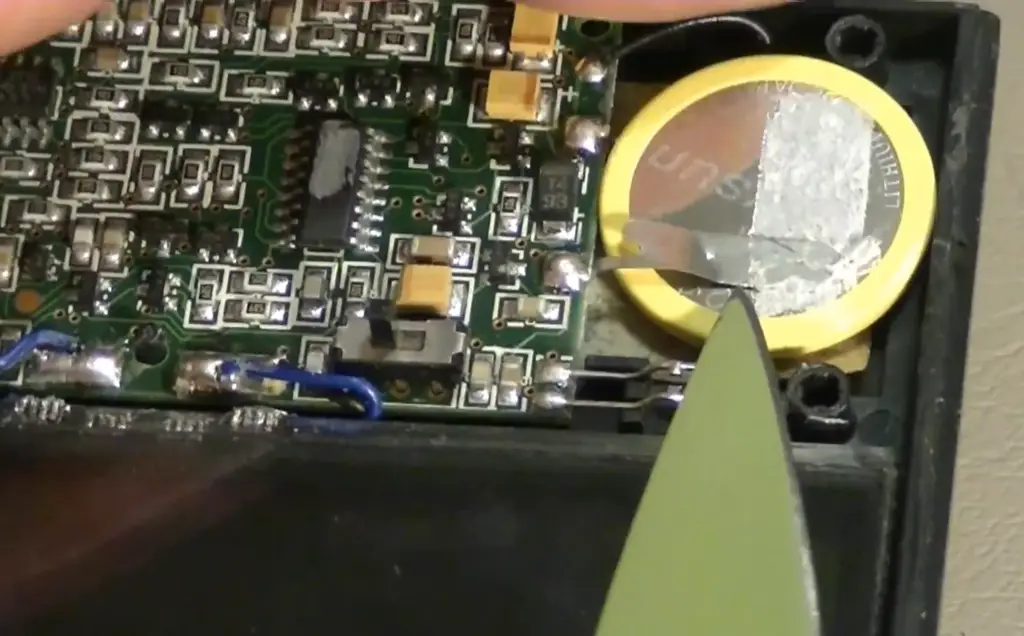
To fix the sensitivity on your helmet, turn it off your helmet by locating the power switch on the side. Turn the knob on the side of your helmet clockwise to increase the sensitivity. If this does not work, try welding again.
If you still can’t see enough of your weld, it’s possible that your helmet is too old and needs to be replaced.
Choose Wider Lens
Auto-darkening welding helmets have a variety of lens sizes to choose from, with the most popular being 3.94 inches by 2.87 inches.
If you have been using a smaller model and find that it isn’t giving you the full view that you need, opting for a wider one may be the answer to your problem. Not only will this give you a better view, but it can also help to prevent eye fatigue.
Problem 7: Weld Seems Too Bright
This is a problem that can occur if your filter is not lined up properly with the lens. If the filter is not in the right position, it will not darken as much as it should, and you will see a bright welding arc.
The solution to this problem is to make sure that the filter is properly positioned before you start welding. Once you have the filter in the right position, you should not have any more problems with the weld seeming too bright.
Use a Darker Shade Lens
One of the most common problems with an auto-darkening welding helmet is that the shade lens is set too light. If you’re having trouble getting your welding hood to darken, try setting the shade lever to a darker setting.
This will ensure that the lens is dark enough to protect your eyes when you start welding. [2]
Problem 8: Eye Strain from Welding
Welding can be a very tiring and straining activity on your body, especially your eyes. If you are having problems with your eyesight after welding, it is important to take a break and rest them. If the problem persists, you may need to see an eye doctor.
Decrease Reaction Time
An auto-darkening welding helmet is a crucial part of any welder’s safety arsenal. Not only does it protect your eyes from the bright flashes of light created by the arc, but it also filters out harmful ultraviolet and infrared rays.
The helmets work by darkening the tint automatically in response to the light emitted by the arc. This allows you to see clearly while welding and then quickly return to a safe, protective state when you’re finished.
However, sometimes the auto-darkening feature can stop working correctly. If your helmet isn’t darkening when it should be, there are a few things you can try to fix the problem.
First, check the batteries. Most helmets use solar power, but some models have backup batteries just in case. If the batteries are dead, the helmet won’t be able to darken properly.
Next, take a look at the welding lens. Over time, it can become scratched or foggy, which will affect its ability to darken correctly. If the lens is damaged, you’ll need to replace it.
If the helmet is not working, it might be because of a problem with the internal sensors. If this is the case, you can try cleaning the sensors with compressed air or a soft brush. If this does not work, you will need to take the helmet to a professional for service. [2]
Replace Battery
If your welding helmet uses a different type of battery, consult your owner’s manual to find out what kind you need. Once you’ve replaced the batteries, check to see if the auto-darkening feature is working again. If it is not working, there may be another issue causing the problem.
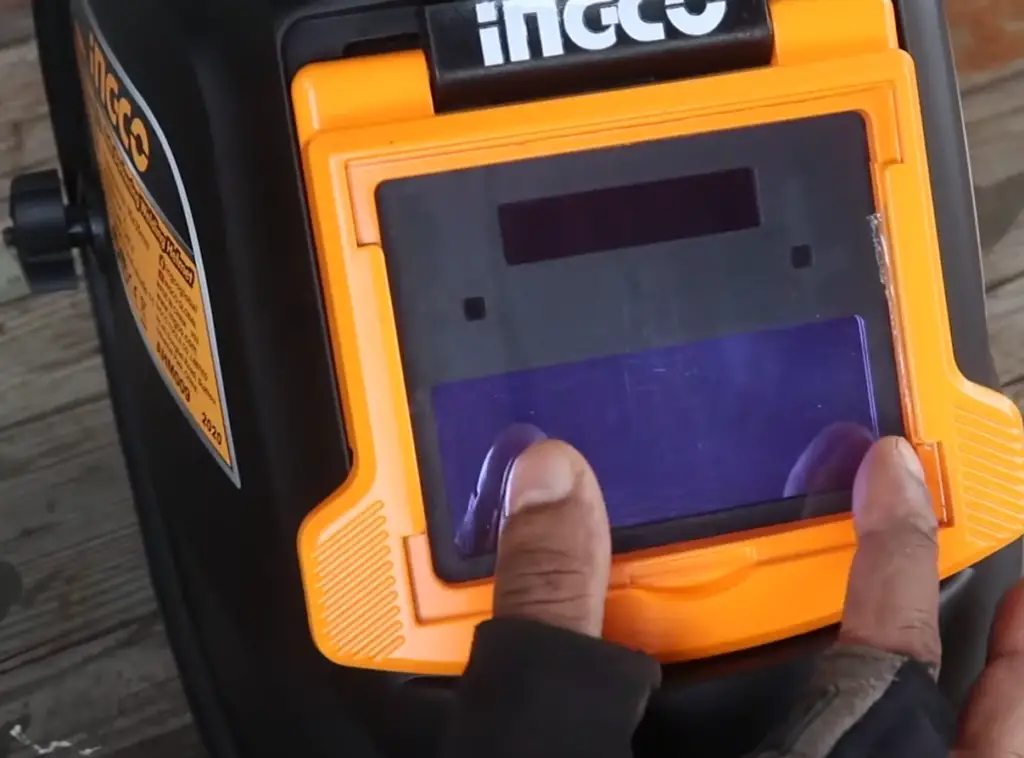
Check Sensor
If replacing the batteries doesn’t fix the problem, you should check the helmet’s sensors. The sensors are what tell the helmet when to darken the lens.
There are usually two sensors in a welding helmet: an arc sensor and a light sensor. The arc sensor is triggered by the welding arc, and the light sensor is triggered by bright light.
To check the sensors, you will need to remove the helmet’s lens cover. Once you have done this, you should be able to see the sensors.
If either of the sensors is cracked, damaged, or missing, it will need to be replaced. You can usually find replacement sensors at welding supply stores.
FAQ
Why is my auto-darkening welding helmet not working?
One of the most common reasons why an auto-darkening welding helmet might not be working is due to a faulty battery. If the battery is not providing enough power, it can cause the auto-darkening filter to not work properly.
Another reason why an auto-darkening welding helmet might not be working is that the sensors are dirty or obstructed.
How do I know if my auto-darkening welding helmet is working?
The best way to test if your auto-darkening welding helmet is working properly is to do a simple light test. Simply put the helmet on and look for any light leaks. If you see any light coming through, then there is a problem with the helmet and it will need to be fixed.
There are two main reasons why an auto-darkening welding helmet might not be working properly:
- The first reason is that the batteries might be dead and need to be replaced;
- The second reason is that the photocells might be dirty or blocked and need to be cleaned;
Can you change the battery in the auto-darkening welding helmet?
Yes, you can change the batteries in most auto-darkening welding helmets. However, some models may require that you send the helmet back to the manufacturer for battery replacement.
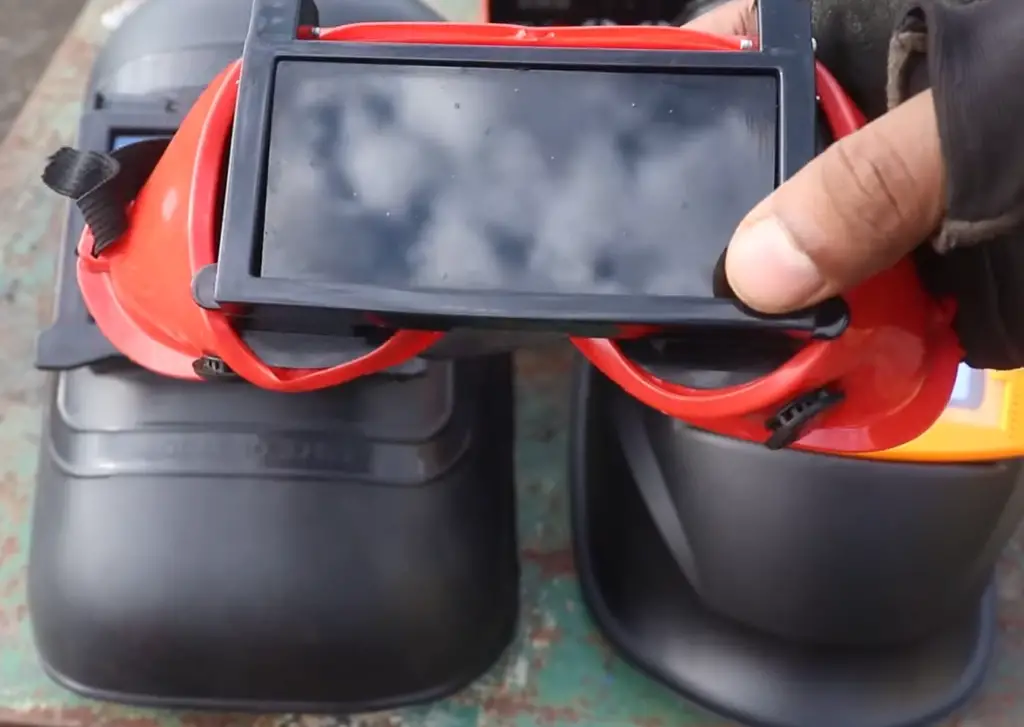
How do I know if my auto-darkening welding helmet is working properly?
To test if your auto-darkening welding helmet is working, weld a test piece and observe the results.
The helmet should darken when you strike an arc and return to its clear state when you stop welding. If the helmet does not darken or if it remains darkened after you stop welding, then there may be a problem with the helmet’s batteries or sensor.
Why can’t I see out of my welding helmet?
If you can’t see through your welding helmet, the problem is most likely with the lens. The lens may be dirty or scratched, or the filter may be damaged. Clean the lens with a soft, dry cloth and check for scratches. If the lens is cracked or broken, replace it with a new one.
If the filter is damaged, it will need to be replaced. Welding helmets have replaceable filters, so you can easily find a new one that fits your helmet.
Useful Video: Auto darkening welding helmet dysfunction and repair
Conclusion
If your auto-darkening welding helmet is not working, there are a few steps you can take to try and fix it. The first step is to check the battery and make sure it is still charged.
If the battery is fine, then you should check the lens for any dirt or debris that may be blocking the light sensor. Finally, if both of these solutions do not work, you may need to replace the entire unit.
We hope this article has been helpful and we wish you luck in repairing your welding helmet!
References:
- https://gearslap.com/auto-darkening-welding-helmet-not-working-troubleshooting-tips/
- https://weldhacks.com/auto-darkening-welding-helmet-not-working/

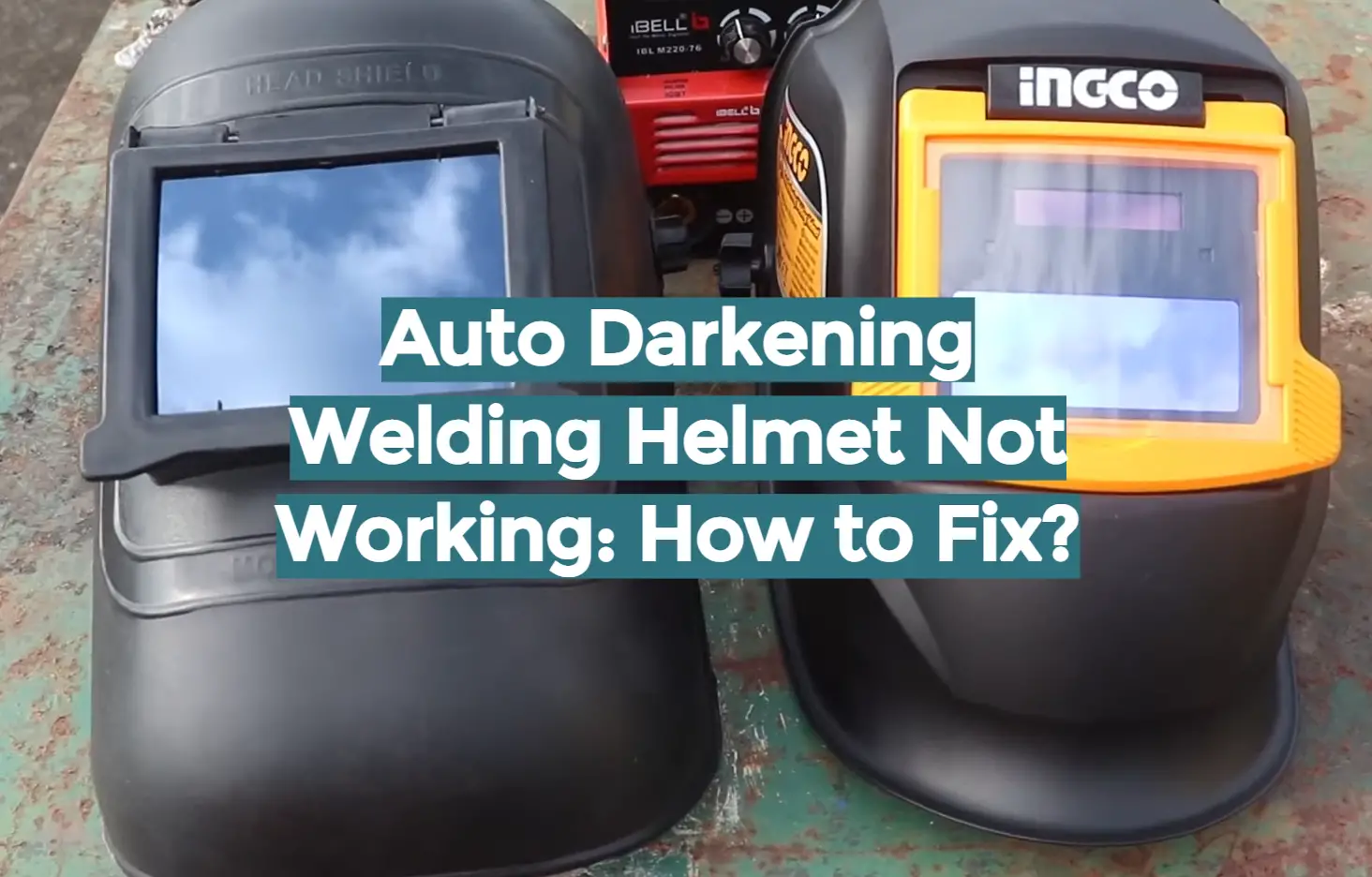

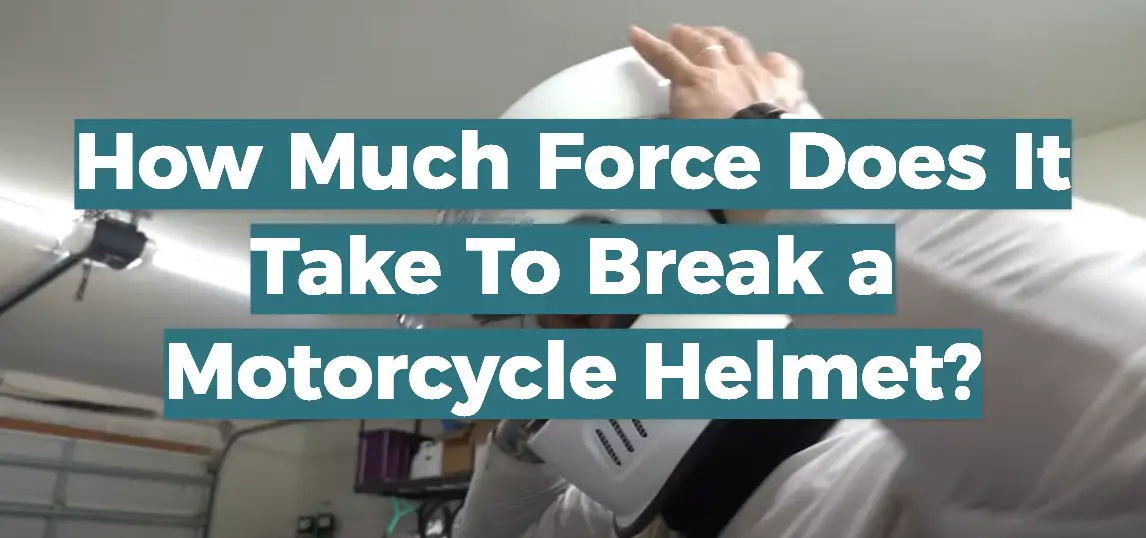

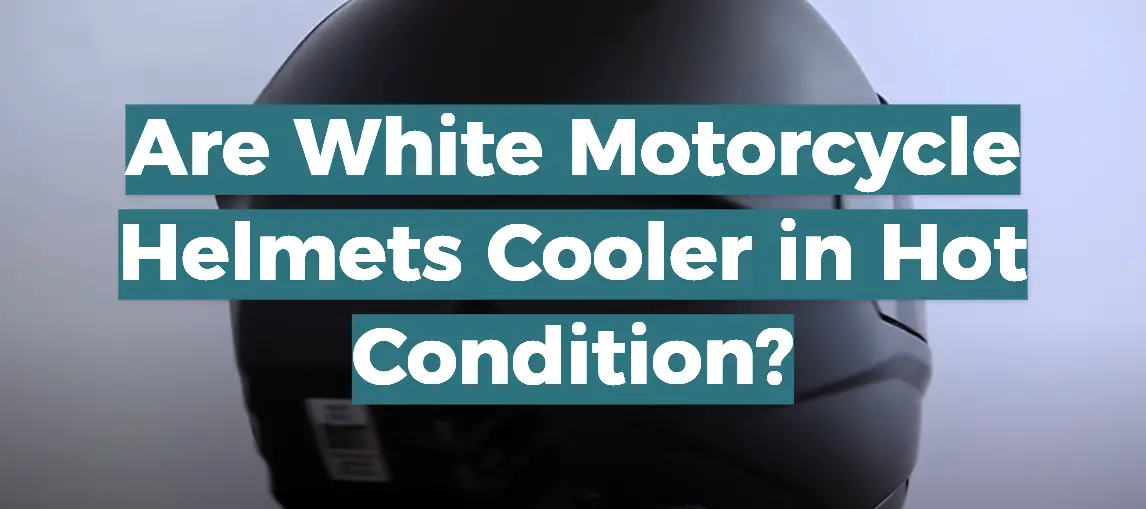
Leave a Reply